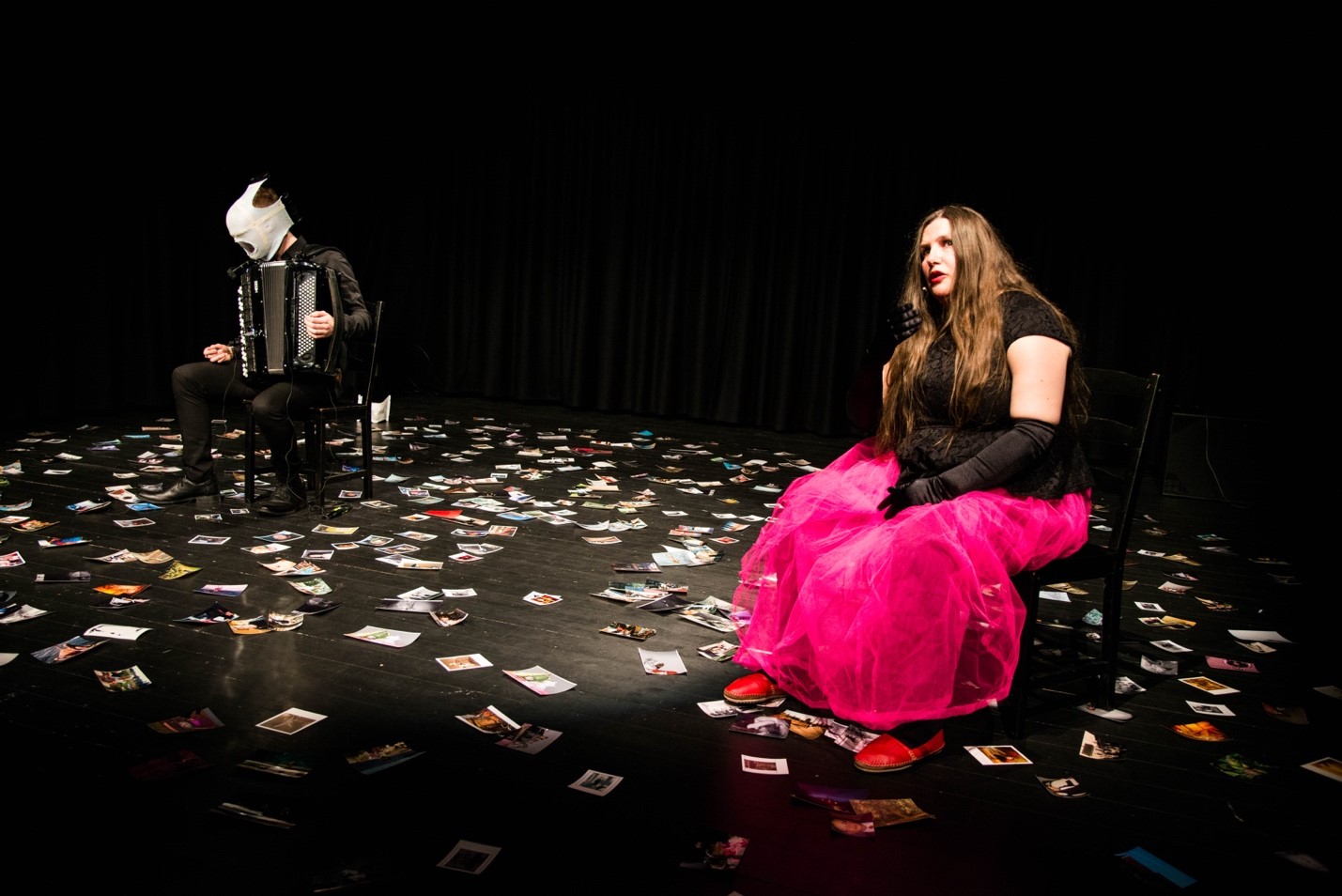The Third Site: Blending Polyphonic Methodology and Epistemology
DOI:
https://doi.org/10.7577/information.5061Keywords:
storytelling, art, academia, methodology, epistemologyAbstract
This article discusses how art and academia can intervene in what the authors call the third site. The authors’ common ground lies in an interest in artistic encounters between people where art and academia bring new discoveries on both the personal and the professional level. The core of this article is the lecture performance in which the authors explore boundaries of the personal, academia and art. By using artistic, art-based, and scientific approaches, they explore how established positions in art and academia can blend polyphonic methodology and epistemology. In their performative writing they use this artistic competence as their starting point, using performativity as an active event that produces representations of lived lives, the production of existential empiricism. Their endeavour is to illuminate value-related and new questions through art making and establish an epistemological and methodological basis for working with art and academia. The authors believe that the blurring of borders between art and academia contributes to epistemological and methodological pluralism.
Through artistic experiences, academia becomes vital and varied, creating a diversity of ways in which knowledge and the meaning of life can be represented.
References
Aadland, K. (2016). The performative relation between storyteller, story and children. In O. Erstad, & K. Kump, Learning across contexts in the knowledge society (pp. 61-84). Rotterdam: Sense Publishers.
Aure, V. (2020). Exploring Eco-social Art Strategies to Expand Onto-epistemological and Methodological Positions in Qualitative Research. In Oslofjord Ecologies. Artistic Research on Environmental and Social Sustainability. Riga: Renewable Futures, Acoustic Space 18(3)
Austin, J. L. (1962). How to Do Things with Words: The William James Lectures delivered at Harvard University in 1955. London: Oxford University Press.
Bachtin, M. (2007). Rabelais och skrattets historia: Francois Rabelais' verk og den folkliga kulturen under medeltiden och renässansen. Bokförlaget Anthropos.
Bakhtin, M. M. (1981). The Dialogic Imagination: Four Essays by M. M. Bakhtin. Austin and London: University of Texas Press.
Bhabha, H. K. (1994). The Location of Culture. Routledge, London and New York.
Borgdorff, H. (2012). The Conflict of the Faculties: Perspectives on Artistic Research and Academia. Leiden: Leiden University Press.
Bornholm, H. (2017). The Swedish Research Council and Artistic Research 2001–2016. Interview with senior research officer Torbjörn Lind. In: Lind, T. Research Ethics and Artistic Freedom in Artistic Research. Artistic Research Yearbook 2017. Swedish Research Council. Motala: Danagårds Litho.
Conquergood, D. (1998). Beyond the Text: Toward a Performative Cultural Politics. In V. Annandale The Future of Performative Studies: Visions and Revisions (25-36). Washington: National Communication Association Journals.
Dahlsveen. M.H. (2019). Hva er meningen? – Momenter av nærvær i et kunstnerisk utviklingsarbeid. Nordic Journal of Art & Research 8(1), 1–15.
Eco. U. (1962/1989). The Open Work. Cambridge, Massachusetts: Harvard University Press. https://monoskop.org/images/6/6b/Eco_Umberto_The_Open_Work.pdf
Edgren, M. (2013). Minne och talandets historia. Tidskrift för genusvetenskap nr 1, 69–72.
Fisher-Lichte, E. (2008). The Transformative power of performance. A new aesthetics. London and New York: Routledge.
Firunts, M. (2016). Staging Professionalization. Performance Research, 21:6, 19–25.
Frank, A. W. (2013). The Wounded Storyteller: Body, Illness, and Ethics. Chicago: University of Chicago Press.
Freeman, M. (2010). Telling Stories: Memory and Narrative. In S. Radstone, & B. Schwarz, Memory Histories, Theories, Debates (pp. 263–277). New York: Fordham University Press.
Heinemeyer, C. (2020). Storytelling in Participatory Arts with Young People: The Gaps in the Story. Cham: Palgrave Macmillan.
Jackson, P. W. (1998). Jon Dewey and the lesson of Art. New haven: Yale University Press.
Klein, J. (2017). What is Artistic Research? Journal for Artistic Research. https://www.jar-online.net/what-artistic-research
Kristeva, J. (1982). Powers of Horror: An Essay on Abjection. New York: Columbia University Press.
Kyndrup, M. (2006). Performativitet, æstetik, udsigelse: Lille note om det performatives æstetik. Peripeti (6).
Lüneburg, B. (2020). Knowledge production through performing. In A. Huber, D. Ingrish, T. Kaufmann, J. Kretz, G. Schroder, & T. Zembylas, Knowing in Performing Artistic Research in Music and the Performing Arts (pp. 185–199). Bielefeld: transcript.
Lwin, S. M. (2010). Capturing the dynamics of narrative development in an oral storytelling performance: A multimodal perspective. Language and Literature 19 4, 357–377.
Mazour-Matusevich, Y. (2009). Nietzsche`s Influence on Bakhtin`s Aesthetics of Grotesque Realism. CLCWeb: Comparative Literature and Culture. 11(2) (2-10) https://doi.org/10.7771/1481-4374.1472
Merleau-Ponty, M. (1968). The Visible and the Invisible. Evanston: Northwetern University Press.
Munch, P. (1996). Norrøne gude- og heltesagn. Oslo: Universitetsforlaget.
Mørch, A. J. (2003). M.M Bakhtin. In M. Bakhtin, Latter og Dialog Utvalgte Skrifter (pp. 5–28). Oslo: J. W. Cappelens Forlag.
National Science Foundation (1953). The Third Annual Report. Washington: Government Printing. https://www.nsf.gov/pubs/1953/annualreports/ar_1953_sec6.pdf
Swedish Research Council (2016). The Future of Swedish Research. Overview 2014 Artistic Research. Stockholm: Swedish Research Council.
Nyman, A.-C., & Sivonen, K. (2005). Livsmening som vårdvetenskapligt begrepp. Vård i Norden, 25(78), 20–24.
Travers, P. (1991). What the Bee Knows: Reflections on Myth, Symbol and Story. London: Thorsons Pub.
Vagle, M.D. (2018). Crafting Phenomenological Research. New York and London: Routledge.
Wilborg, M. F. (1998). Döendet - en begreppsanalys. Vård i Norden, 18(47), 46–51.

Downloads
Published
How to Cite
Issue
Section
License
Copyright (c) 2022 Venke Aure, Mimesis Heidi Dahlsveen

This work is licensed under a Creative Commons Attribution 4.0 International License.
Authors who publish with this journal agree to the following terms:
- Authors retain copyright and grant the journal right of first publication with the work simultaneously licensed under a Creative Commons Attribution License that allows others to share the work with an acknowledgement of the work's authorship and initial publication in this journal.
- Authors are able to enter into separate, additional contractual arrangements for the non-exclusive distribution of the journal's published version of the work (e.g., post it to an institutional repository or publish it in a book), with an acknowledgement of its initial publication in this journal.
- Authors are permitted and encouraged to post their work online (e.g., in institutional repositories or on their website) prior to and during the submission process, as it can lead to productive exchanges, as well as earlier and greater citation of published work (See The Effect of Open Access).